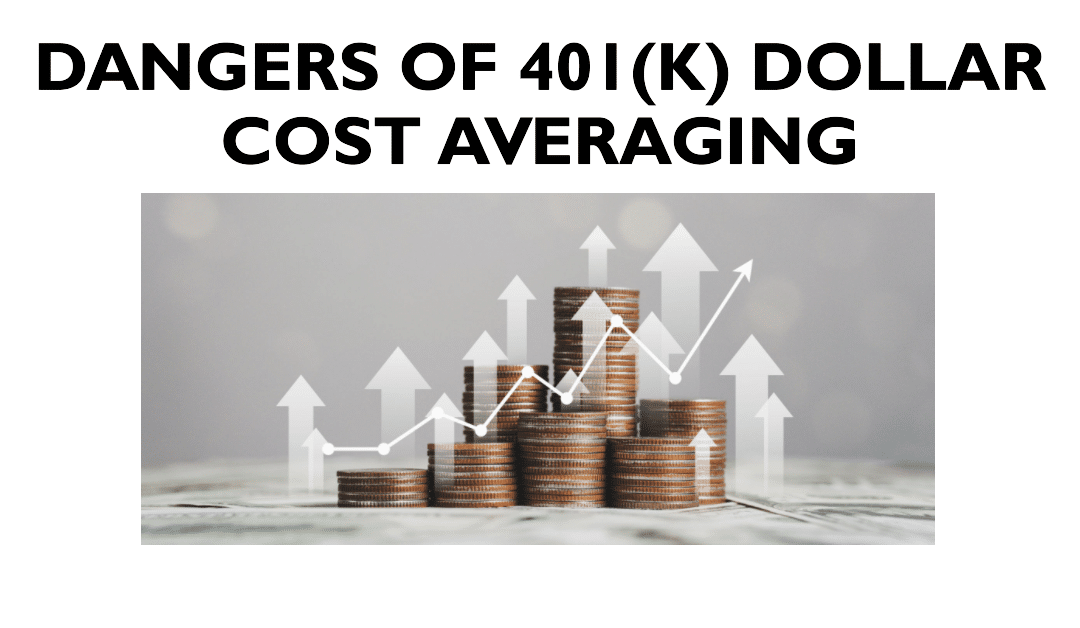Dollar-cost averaging. Promoted as one of the main pillars of any 401(k) account investment management strategy.
This strategy suits many 401(k) investors. Each month, money is added to their 401(k) account. Through personal contributions and company-matching contributions.
Dollar-cost averaging adds money to your 401(k) on a regular basis. In theory, this strategy will lower your stock and bond market risk. Because you reduce the impact of 401(k) purchases at stock and bond market highs or lows.
Like all investment management theories. The theory of dollar-cost averaging works most of the time. In rising stock and falling bond markets. Until it does not.
What happens to your 401(k) when it does not work? When you realize you are “throwing good money after bad.”
You are throwing more 401(k) contributions at a bad stock and bond market environment. Trying to improve a bad situation. By spending more money on it.
There are economic and stock market conditions when dollar-cost averaging does not work. You can lose the last several years of stock and bond market gains. Along with your personal and company-matching 401(k) contributions.
All for the sake of following the dollar-cost averaging holy grail.
Some 401(k) investors remain convinced now. Higher stock prices and lower interest rates are on the way. There is no way to tell for certain. I do not know the answer.
I can tell you one thing for certain. Any 401(k) investment management missteps going forward could have huge consequences. For your retirement savings.
Stock and bond market losses are inevitable. No one can time stock and bond market highs on a consistent basis. Market timing is not the issue now.
The ability to preserve your 401(k) account value is the main concern now.
This fact is especially true if you are a handful of years from your desired retirement date. You will not be able to recover double-digit stock and bond market losses. You do not have many more years of 401(k) personal and company-matching contributions.
I am not in the stock and bond market forecasting business. My guess is as good or bad as any other. But I can make the following statement now. Based on 39 years of managing other people’s money.
Give serious consideration now to lower your stock and bond market risk levels. Understand exactly why you own each individual 401(k) mutual fund you own now.
Your 100% participation in falling stock markets and rising interest rates is optional. Now and going forward.
Lager & Company, Inc.
I have spent the last several years trying to figure out the best way to share my 401(k) advice content. I have tried Twitter, Facebook, company web site, and LinkedIn Groups. I now realize nothing beats a well-crafted newsletter delivered to your inbox once a week. Sign-up here.
If you are concerned about your current 401(k) mutual fund relative strength ranking, comment below. Let’s start a conversation. The preservation of your 401(k) principal might be at risk.

